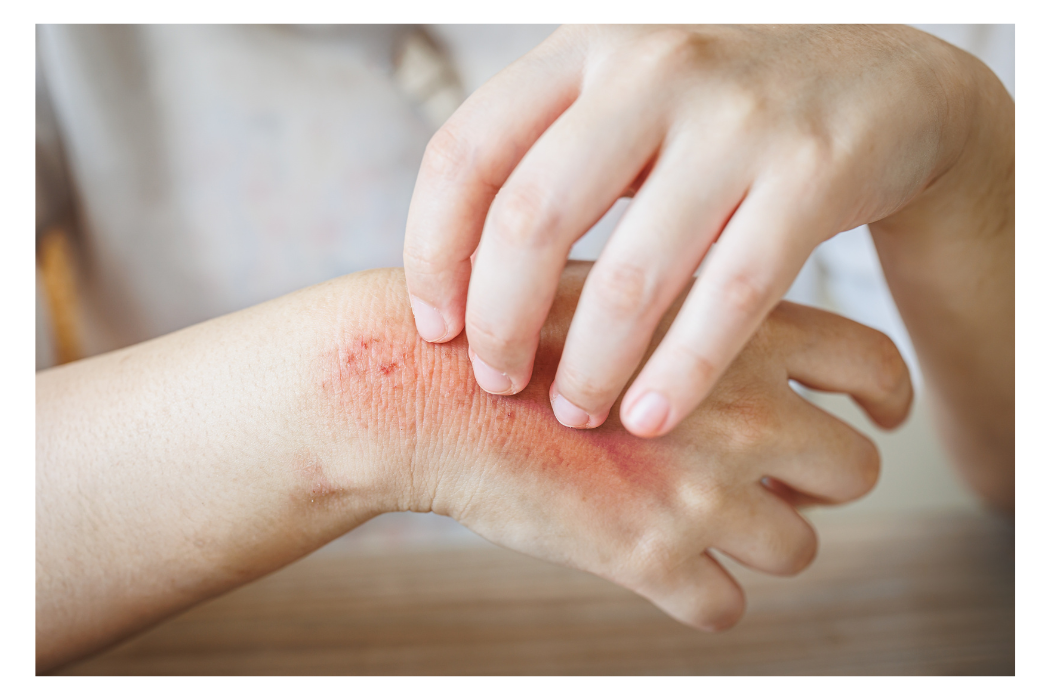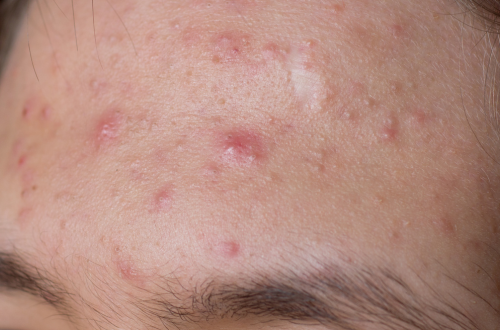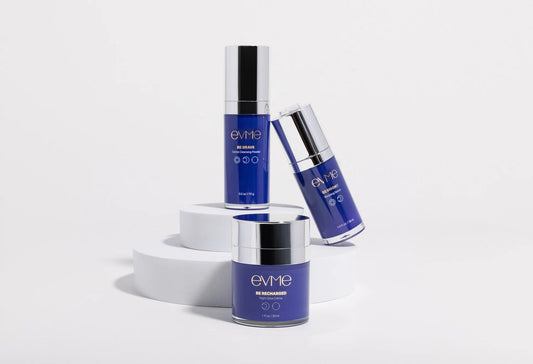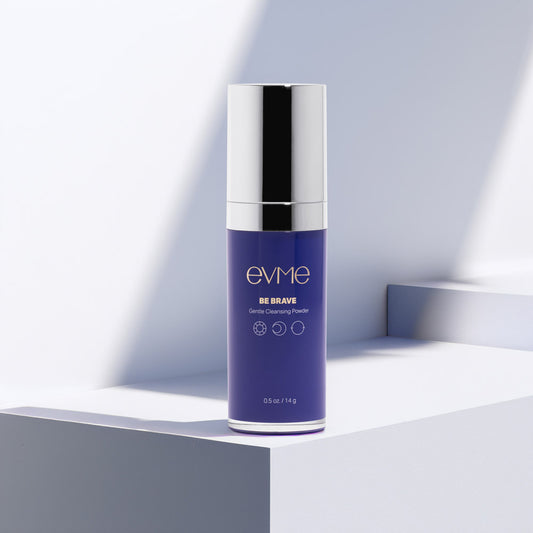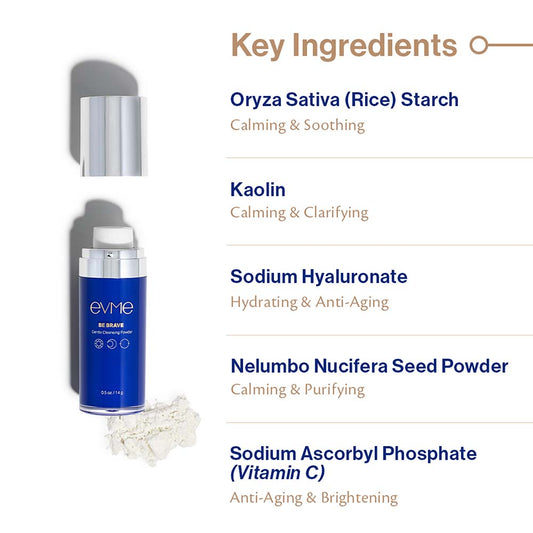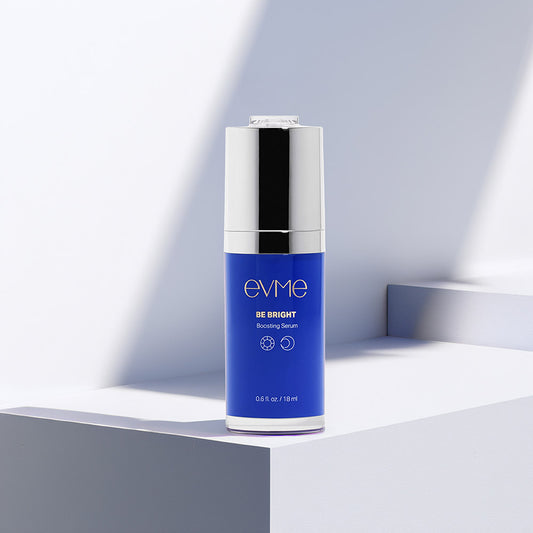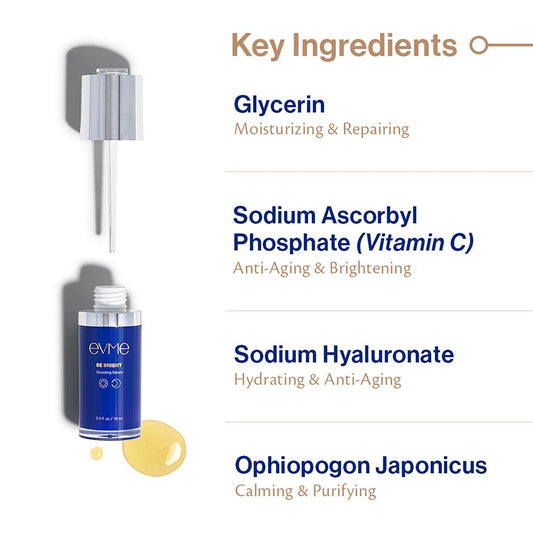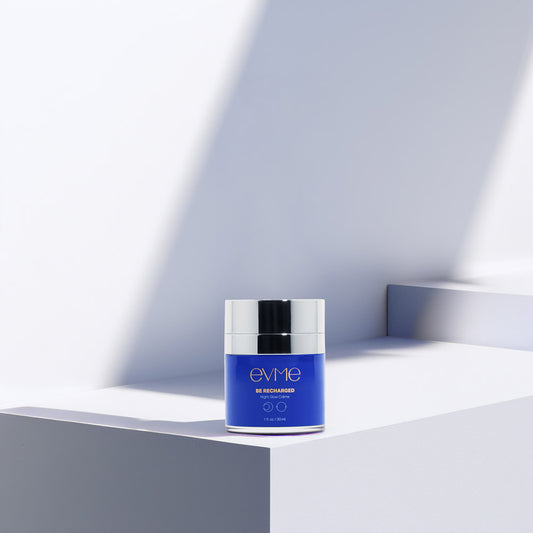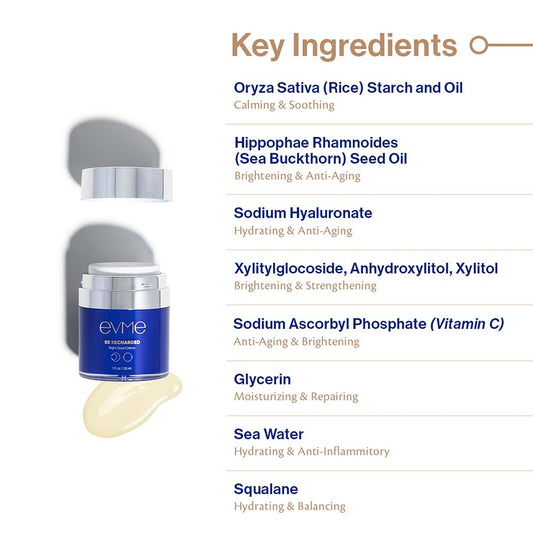Try Evme, allergist-created luxe skincare for sensitive and allergic skin.
Shop All ProductsCan I Trust Beauty Claims Like “Hypoallergenic” and “Clean?”
October 19, 2022
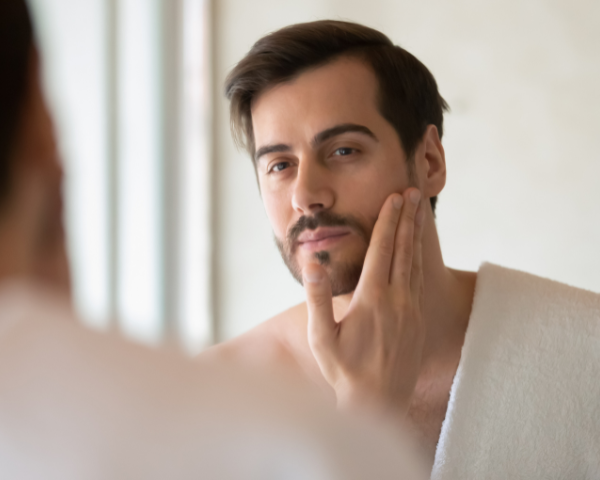
When making beauty claims, brands toss around buzzwords like “hypoallergenic,” “clean,” “natural,” or “green.” Unfortunately, there is more to these buzzwords than meets the eye. These terms are all bucketed together, but they have such different value propositions — and none of these are particularly helpful for people with allergic and sensitive skin.
This has led me to create an entirely new category of skincare, aiming at “sans-allergenic.”
What is the Problem With “Hypoallergenic” Labeling?
Based on the number of times it appears on product packaging and brand advertising, you might think that “hypoallergenic” is supposed to be better for sensitive skin. Shockingly, even products labeled with phrases like “hypoallergenic” or “for sensitive skin” can contain countless triggers and hidden reactors that could irritate the skin more than it helps.
In fact, according to a 2015 article in the Journal of Allergy and Clinical Immunology, 90% of personal care products marketed as "hypoallergenic" still contain at least one major contact allergen!
For consumers with sensitive skin, this doesn’t exactly inspire confidence. I certainly have used way too many products labeled as hypoallergenic that caused me to react.
How is “Hypoallergenic” Regulated by the FDA?
Actually, it’s not.
The problem, according to the FDA website, is that “there are no Federal standards or definitions that govern the use of the term ‘hypoallergenic.’ The term means whatever a particular company wants it to mean. Manufacturers of cosmetics labeled as hypoallergenic are not required to submit substantiation of their hypoallergenicity claims to the FDA.”
Oftentimes products that claim to be “hypoallergenic” still contain allergenic substances like fragrances, dyes, acrylates, allergenic preservatives (including formaldehyde releasers), and other allergenic fillers and stabilizers. These ingredients can cause redness, rashes, dryness, flakiness, and sensitivity.
As you can see by its preponderance in product labels on store shelves, the term “hypoallergenic” may carry market value when promoting products to consumers. However, in its real-world experience, it carries very little practical meaning.
What Does It Mean to be “Clean”?
Clean beauty has been all the rage in the beauty industry over the past decade. However, there’s no official or single definition of clean beauty. This again leaves the definition in the hands of the brand.
Most people would equate a clean product as being non-toxic and safe, with transparent labeling of ingredients. Although clean brands may have good intentions, there’s a lot of variability in how brands interpret “clean.” One clean brand may only be free of phthalates and sulfates, whereas another may be free of oxybenzone and triclosan. These are completely different offerings to the consumer. How confusing!
“Clean” is its own category without direct impact on allergenicity. Therefore, there’s no guarantee that you won’t react to clean products if you have sensitive or allergic skin.

What About Natural Ingredients?
The idea of incorporating natural ingredients into products sounds truly fantastic. But are there any downsides? The problem is that people assume natural ingredients are not irritating or allergenic — yet they absolutely can be! These include essential oils, natural fragrances, natural dyes, and some plant-based byproducts like the ones that contain urushiol (a resinous sap derived from poison oak, poison ivy and sumac) or stinging nettle and ragweed.
Personal care products today use tons of food allergens in their formulations in an effort to be more “natural.” And food allergies and sensitivities are on the rise! Evme has formulated its products to be free of known food allergens (such as dairy, wheat, soy, eggs, nuts, coconut, seafood, sesame and many others) as well as a huge list of plant-based and naturally-sourced reactors.
Moving Toward a “Sans-Allergenic” Standard
At Evme, to make our products “clean” and “hypoallergenic,” we’ve thought about each individual ingredient from soup to nuts: from how it was made and sourced, all the way to how it affects our bodies and the environment around us.
Having treated thousands of patients with skin allergies, I looked at ingredients with a very specific eye. I wanted to remove the known players that cause skin allergies and instead focus on ingredients that would be high-performance and multi-functional. We call this process the Evme Method.
In creating the Evme Method, we’ve gone beyond the loosely-defined buzzwords of “hypoallergenic” and “clean” to arrive at a more robust and meaningful standard. We created our own category called “sans-allergenic.”
“Hypoallergenic” means less allergenic. “Sans-allergenic” means without allergens. We’ve moved the bar higher — toward being fully “sans-allergenic.”
Realistically, any ingredient has the potential to be allergenic. Despite that high bar, we’ve done everything in our reach to source the most non-reactive ingredients, to get as close as possible to being completely allergen- and irritant-free.
No marketing fluff. No buzzwords. Just a high bar to meet and exceed.
Recommended articles
Evme Sans-Allergenic Skincare Products
- Choosing a selection results in a full page refresh.



